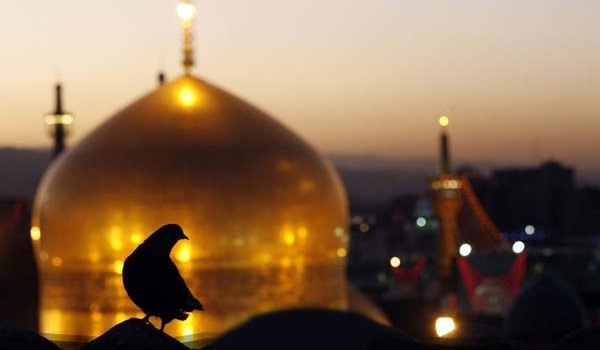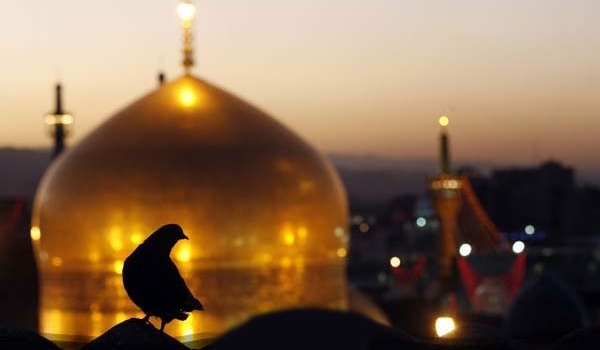[caption id="attachment_156368" align="alignright" width="177"]
 Shrine of Imam Reza, Mashhad[/caption]
Shrine of Imam Reza, Mashhad[/caption]TEHRAN (FNA)- Thousands of tourists each year arrive here in Iran to see the country's natural beauties and get more familiar with sub-cultures while enjoying an unforgettable vacation.
March 21 marks the start of Spring and the turn of the new Iranian year, and to commemorate the occassion we invite you to join us in an electronic tour of Iran with one province covered for you each day.
Today: Razavi Khorasan Province
The province of Razavi Khorasan is in the north-east of Iran. It borders with Afghanistan in the east and Turkmenistan in the north. It was a part of former province of Khorasan which in 2004 was divided into three provinces of "North Korasan", "Razavi Khorasan" and "South Khorasan".
Mashhad is the capital of the province; Ghouchan, Dargaz, Chenaran, Sarakhs, Fariman, Torbat-e Jam, Taybad, Ferdows, Ghayen, Khaf, Rashtkhar, Kashmar, Bardaskan, Neyshabour, Sabzevar, Gonabad, Kalat and Khalil Abad are other cities of South Khorasan.
This province envelopes many historical and natural attractions, such as mineral water springs, small lakes, recreational areas, caves and protected regions, and various hiking areas.
Besides these, Khorasan encompasses numerous religious buildings and places of pilgrimage, including the shrine of Imam Reza, Goharshad mosque and many other mausoleums and Imamzadehs which attract visitors to this province.
The Cultural Heritage of Iran lists 1179 sites of historical and cultural significance in all three provinces of Khorasan.
Holy Shrine of Imam Reza
The most beautiful religious complex in the world.
Iran is a complex which contains the mausoleum of Imam Reza, the eighth Imam of Twelver Shiites.
It is the largest mosque in the world by dimension and the second largest in capacity.
This complex is the center of tourism in Iran. The shrine itself covers an area of 267,079m2 while the seven courtyards which surround it cover an area of 331,578m2 - totaling 598,657 m2 (6,443,890 sq ft).
Mofakham Mirror House
This building is in the city of Bojnurd, and belonged to Sardar Mofakham, one of the officials in the late Qajar period. As the name indicates, this building boasts of its mirror work and tile design.
Belqeis Ancient City
This city which is actually the ruins of the old city of Esfarayen, is located 3 km. from the present city, and to the right of Sabzevar - Esfarayen Road. Earthen ware discovered in this area dates back to the Safavid era, and it is believed that this city had been constructed much before this period.
Qarhsoo River
This river flows in the valley of Esfarayen. It originates from south of Aladaq Mountains and to the north from Shah Jahan Mountain Ranges. After saturating the Jajrum plain, it flows from north to south and joins the Kalshoor River in the south of Sabzevar. Finally at the end of its course it enters the salt desert which seeps up its flow. This river too has its own special attractions.
Ali Abad Tower
This tower is located in the village of Ali Abad 42 km. from the city of Kashmar. The tower has been erected on the fort and the minaret of which resembles a tower, and its facade comprises of decorative brick inlaying. The dome stands 18 m. tall, the interior of which is octagon. This tower is on historical records.
Ferdowsi Tomb, Toos
The tomb of the great poet Abolqassem Ferdowsi, can be accounted for a place of 'worship' so to be called by the lovers of Farsi Literature. This renowned historical site has brought fame for the city of Toos. The construction of this tomb began in the year 1928 and work came to an end in 1934. In the year 1964 a few changes were made in the structure. The internal walls of the tomb are adorned with sculptures depicting scenes from the 'Shahnameh'.
Each side wall of the building is approximately 30 m. x 30 m. and each of the four sides have stairways lead up to it. The length of each side of the main buildings foundation is about 16 m., worked with marble it is adorned by verses from the Shahnameh in the Nasta'liq script. Above the southern stone, a symbol of the Ahuramazda embossment, a replica from Achaemenian buildings is in sight. At the vicinity of the tomb of this great Iranian poet, is the resting place of a contemporary poet Mehdi Akhvan Saless.
Goharshad Mosque
This mosque was constructed by Goharshad (the wife of Shahrokh Teimoori), in 821 AH. The mosque has a large courtyard in the center with four porticos. Beautiful inscriptions in Thulth script (the work of Shahrokh's son) adorn the walls. The most important section of this mosque is its southern portico which boasts of arches and valuable inscriptions. Alongside this portico stand solid minarets with thickness of 6 m., with the same height of the portico itself, which help in supporting the ceiling and prevent the roof from collapsing.
In bombardments of the Russian forces in 1330 AH, the main dome of this mosque which was 15m. in dia. sustained a loss. This dome was demolished in the year 1339 AH. The current dome has been constructed (in keeping with the former circumference) with concrete. This mosque has gone under repair once during the Safavid reign and the other in the Qajar era.
Koohsangi Recreation Place
This is one of the most beautiful spots and is situated on the southern fringes of the city. To the front of this hillock stands a summer house with a large pool - this pool runs 100 m. in length and 60 m. in width. This pool is fed by subterranean waters (Qanat) from the Gonabad area. Running alongside are paved paths and trees which enhance the beauty of this area which are also famed as "Dalan-e-Behesht" (The corridor to Paradise).
Hakim Omar Khayam Nayshaburi Tomb
One of the eye-catching sites is the garden which envelopes the resting place of the great scholar, mathematician, philosopher and poet, Hakim Omar Khayam. The said garden belonged to him. The exact date of his death have not been specified and it is known to be within the years 506 - 530 AH. Later another monument was erected about 100 m. north of the tomb to commemorate this renowned personality. This structure is a high tomb made of iron and stone, consisting of ten bases, which have geometrical shapes and are connected to each other.
Sheikh Attar Nayshaburi Tomb
Faridodin Abu Hamed Mohammed-ebne-Abu Bakr Ebrahim Ben Issaq Attar Nayshaburi, the great poet and Gnostic of Iran was born around the year 540 AH and expired in 618 AH. The tomb of this famous poet is located 6 km. west of Nayshabur, near Imamzadeh Mahrooq and the tomb of Khayam.
This structure is octagonal in shape with a tile worked onion shaped dome. It has 4 entrances, the northern one is the main entrance. This historical structure has been tastefully adorned with colored (green, yellow and blue) tiles and carvings. The interior site is covered by plaster and has four seats. The Mausoleum is located in a garden covering an area of about 119 sq. m. The grave of the well known painter Kamalol Molk is also situated in a part of this garden.



By Fars News Agency











